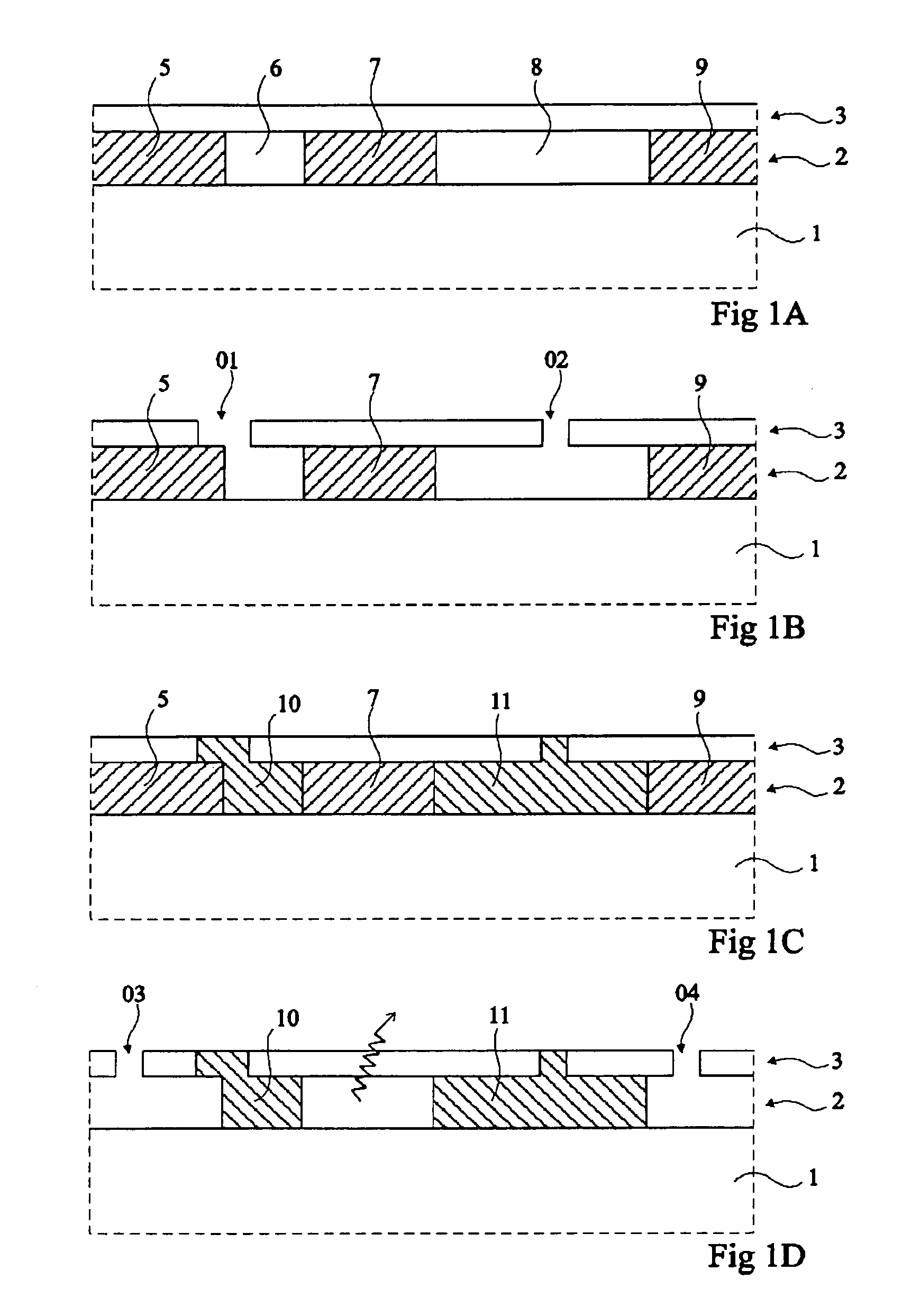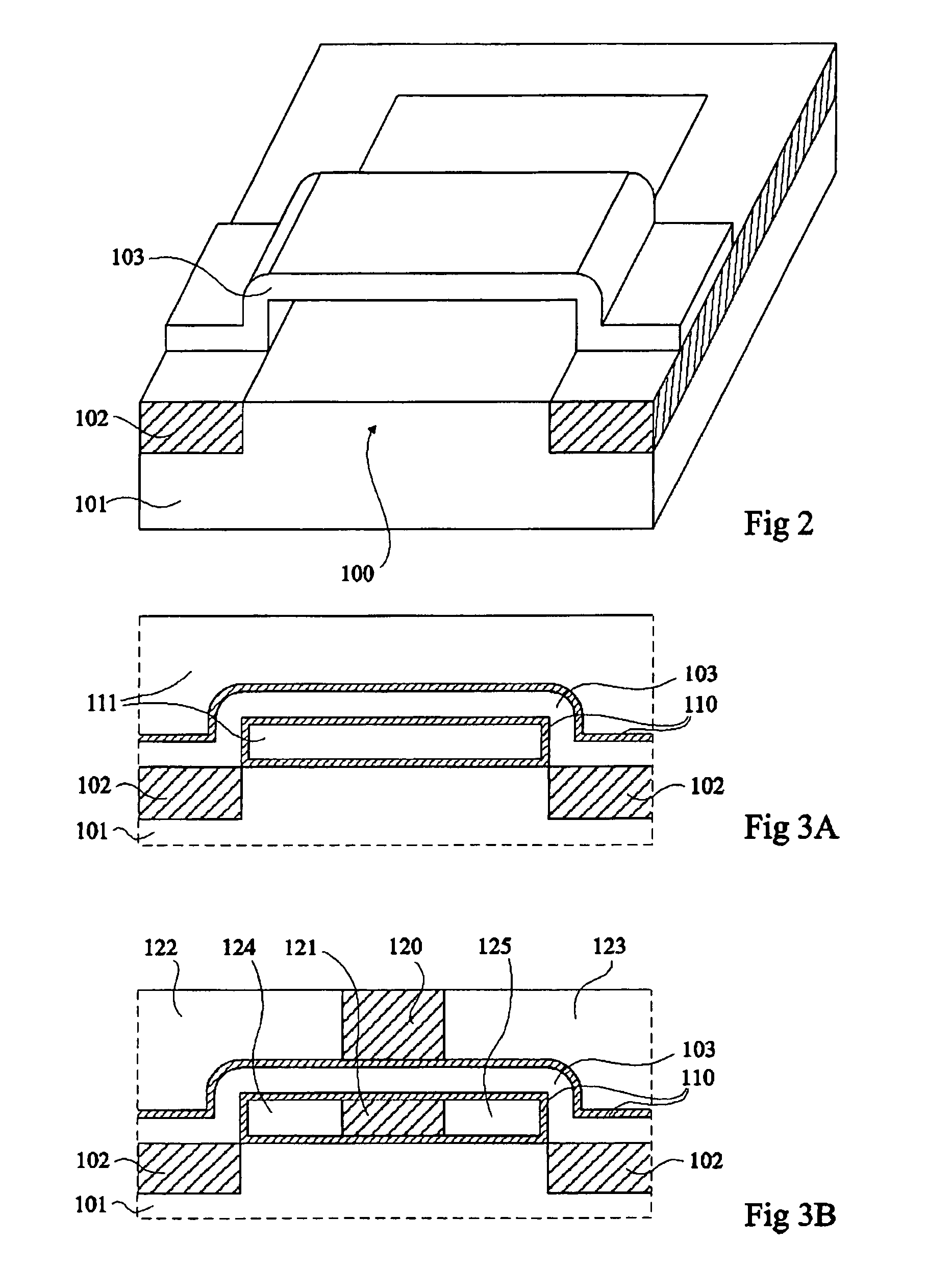Method for forming, under a thin layer of a first material, portions of another material and/or empty areas
a technology of forming method and first material, applied in the direction of semiconductor/solid-state device manufacturing, electrical equipment, transistors, etc., can solve the problems of difficult control of the thickness of the buried layer, the inability to form a buried layer of any type of material, and the relatively destructive effect of the implantation technique on the upper part of the substra
- Summary
- Abstract
- Description
- Claims
- Application Information
AI Technical Summary
Benefits of technology
Problems solved by technology
Method used
Image
Examples
Embodiment Construction
[0027]For clarity, the same elements have been designated with the same reference numerals in the different drawings and, further, as usual in the representation of integrated circuits, the drawings are not to scale.
[0028]The general aspects of the method of the present invention are described in relation with FIGS. 1A to 1D. Examples of implementation of the method are described hereafter for the forming of a transistor of SON type and for the forming of an interconnect network enabling connecting the components of a circuit to one another.
[0029]In an initial step, illustrated in FIG. 1A, a stacking of a photosensitive layer 2 and of a thin layer 3 of a given material is formed on a substrate 1. Substrate 1 may have any structure obtained after a step of a standard integrated circuit forming method. The stacking of photosensitive layer 2 and of thin layer 3 may be obtained according to various methods as will appear in the examples of implementation of the method of the present inv...
PUM
| Property | Measurement | Unit |
|---|---|---|
| thickness | aaaaa | aaaaa |
| photosensitive | aaaaa | aaaaa |
| conductive | aaaaa | aaaaa |
Abstract
Description
Claims
Application Information
 Login to View More
Login to View More - R&D
- Intellectual Property
- Life Sciences
- Materials
- Tech Scout
- Unparalleled Data Quality
- Higher Quality Content
- 60% Fewer Hallucinations
Browse by: Latest US Patents, China's latest patents, Technical Efficacy Thesaurus, Application Domain, Technology Topic, Popular Technical Reports.
© 2025 PatSnap. All rights reserved.Legal|Privacy policy|Modern Slavery Act Transparency Statement|Sitemap|About US| Contact US: help@patsnap.com



